Hands-On – A. Lange & Söhne 1815 Annual Calendar, Lange’s “Entry-Level” Complication Watch
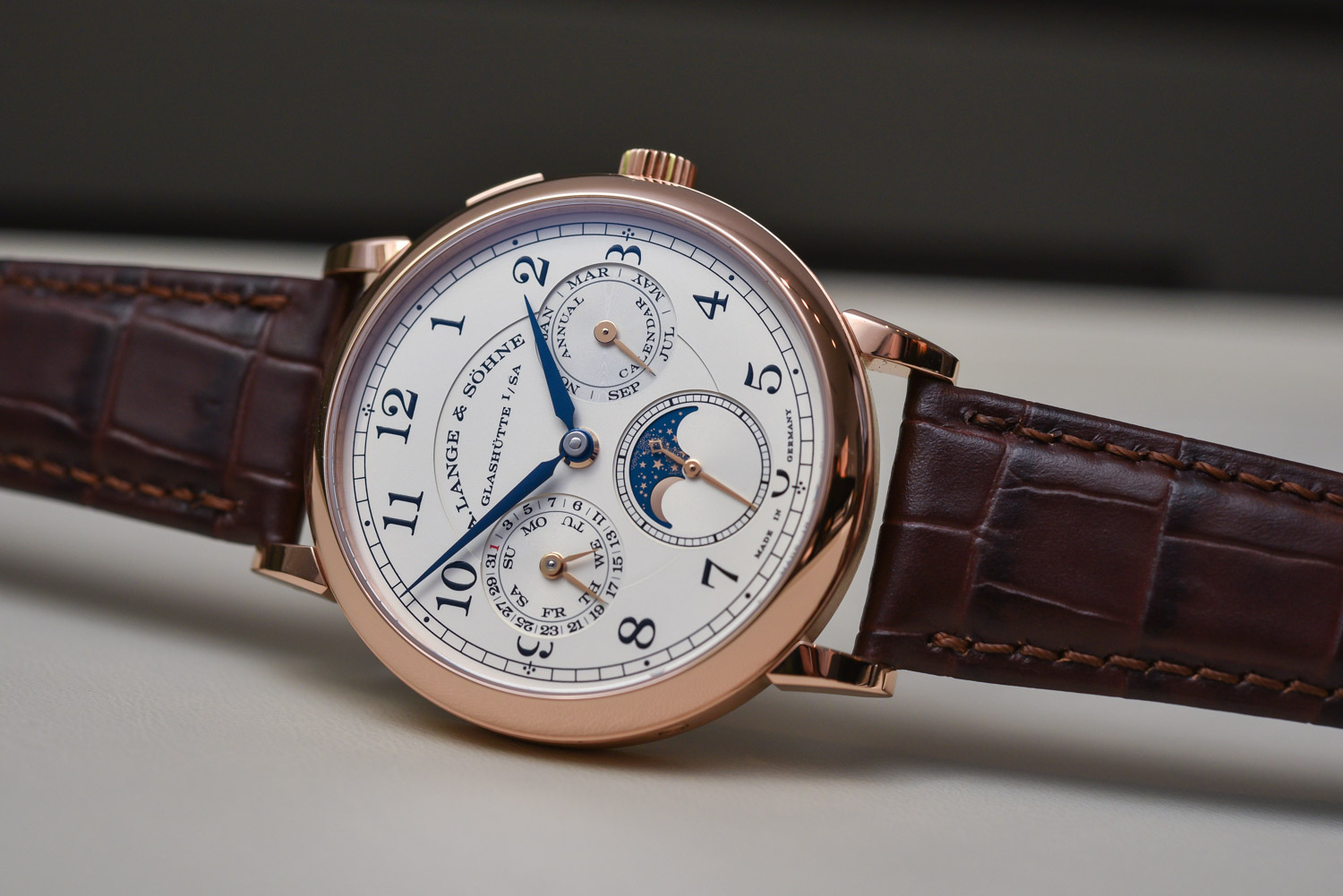
Over the last few years, A. Lange & Söhne has been making its popular 1815 collection more of a focus, introducing several exceptional models, like the insane Tourbograph Perpetual Pour le Merite unveiled at SIHH 2017. While that model may have stolen the spotlight (and with good reason), today we’re giving some much needed hands-on attention to another great watch presented by the brand at the show; the A. Lange & Söhne 1815 Annual Calendar, which is the brand’s most accessible “complication watch”.
Since being introduced in 2004, the 1815 series – which pays tribute to the birth year of company founder, Ferdinand A. Lange – has quickly grown to become one of Lange’s most popular collections. Originally viewed as a gateway to more complex models, such as the Datograph Perpetual Tourbillon and the Double Split, it opened-up the brand to a slightly broader, (possibly younger) audience. These days however, it stands apart as its own legitimate collection with several interesting complications, which now of course includes the Annual Calendar.
The annual calendar is arguably one of the most interesting and practical complications available today. Typically more accessible than the perpetual calendar and infinitely more useful than a standard calendar, the annual calendar complication offers a lot of bang for the buck. Surprisingly though, the complication itself is not that old, having only been patented by a famed Swiss watch manufacturer with the initials PP back in 1996.
In a nutshell, the annual calendar displays the day, date and month and is capable of independently adjusting for months with 30 or 31 days, automatically updating to the correct date at the end of the month. Unlike a perpetual calendar however, an annual calendar cannot automatically adjust for the 28 (or 29) days of February, which means it requires a single adjustment once a year, at the end of February, to switch to the 1st of March.
This is the second annual calendar from Lange, with the first being the Saxonia Annual Calendar introduced in 2010. Unlike that model, however, the new 1815 Annual Calendar is powered by a manually-wound movement in keeping with the ethos of the collection. The dial lay-out is similar with the calendar indications shown on two sub-dials at 3 and 9 o’clock, and the moon-phase display integrated into the subsidiary seconds dial at 6 o’clock. Rather than being shown in a digital format at 12 o’clock however, like on the Saxonia version, the date is shown in analogue form along with the day of the week on the sub-dial at 9 o’clock. Arguably the digital display is more legible but I prefer this traditional style as it gives the watch a more classic feel. The month is shown on the sub-dial at 3 o’clock.
On the wrist, the 1815 Annual Calendar is simply stunning, not to mention very comfortable. Offered in a 40mm round case that measures just 10.1mm thick, it is available in your choice of 18k white or red gold. The dial is made from solid silver and features Arabic numerals and a railway-track minute scale around the periphery – classical to the 1815 Collection. The main hands are blued for the hours and minutes, while the calendar hands and small seconds hand match the case’s material. The moon phase at six o’clock is extremely accurate and only needs to be corrected once every 122.6 years.
A 2 o’clock there is a button that allows you to collectively advance all indications simultaneously, which is particularly helpful if the watch has not been in use for a while. You can also advance the date separately using a recessed push piece, the first time this option has ever been available in a Lange calendar model, while three additional recessed push pieces also allow for the separate corrections of the day, month and moon phase, respectively.
Inside is the Calibre L051.3, based on the well-known movement of the 3-hand 1815, with the annual calendar module added on top. The module is only 1.4mm thick, so it doesn’t add much height to the movement (5.7mm in total), which translates into a slimmer case profile. Impressively, despite its compact design, this manually wound movement still offers a max power reserve of 72 hours. Visible through the sapphire case back, the movement is stunning to look at and features a ¾ plate decorated with Glashutte stripes, gold chatons with blued screws, hand-engraved cock bridge and a screwed balance. Not that we would expect anything less from the German watchmaker. Price is set 37,500 Euro for both versions (German retail price, inc. taxes), which might be steep at first, however it is to be seen as relatively aggressive, compared to the 44,500 Euros required by the Saxonia Annual Calendar (yet offering automatic winding and large date). More on www.alange-soehne.com.
Technical Specifications – A. Lange & Söhne 1815 Annual Calendar
- Case: 40mm diameter x 10.1mm thick – 18k gold (white or rose) polished and satined surfaces – sapphire crystal on both sides
- Movement: Calibre L051.3, in-house produced – manually wound – 3Hz frequency – 72H power reserve – hours, minutes, small second, annual calendar, moon phases
- Strap: Hand-stitched alligator leather strap with pin buckle matching the case
- Reference: 238.032 (pink gold) – 238.026 (white gold)
- Price: 37,500 Euro

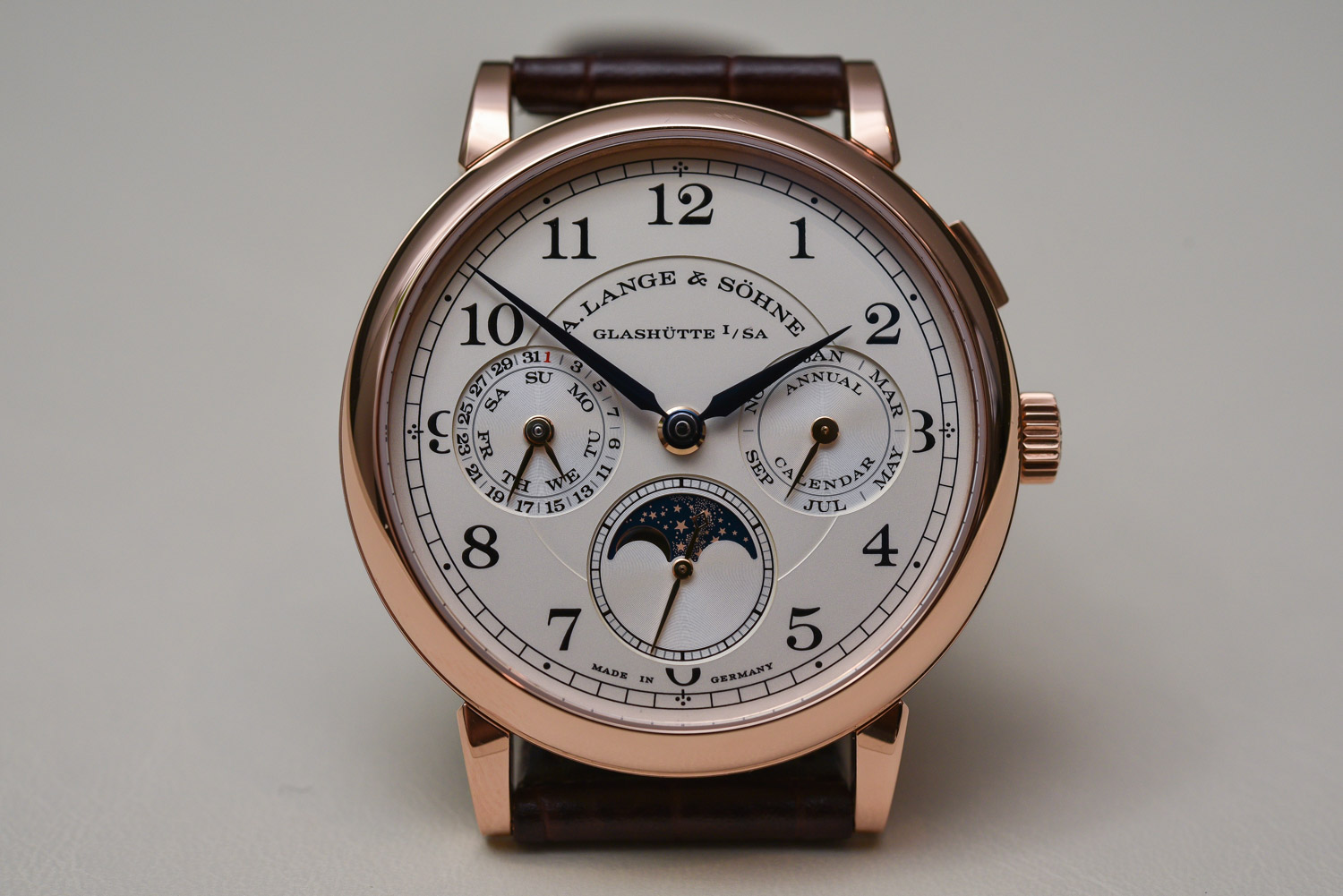
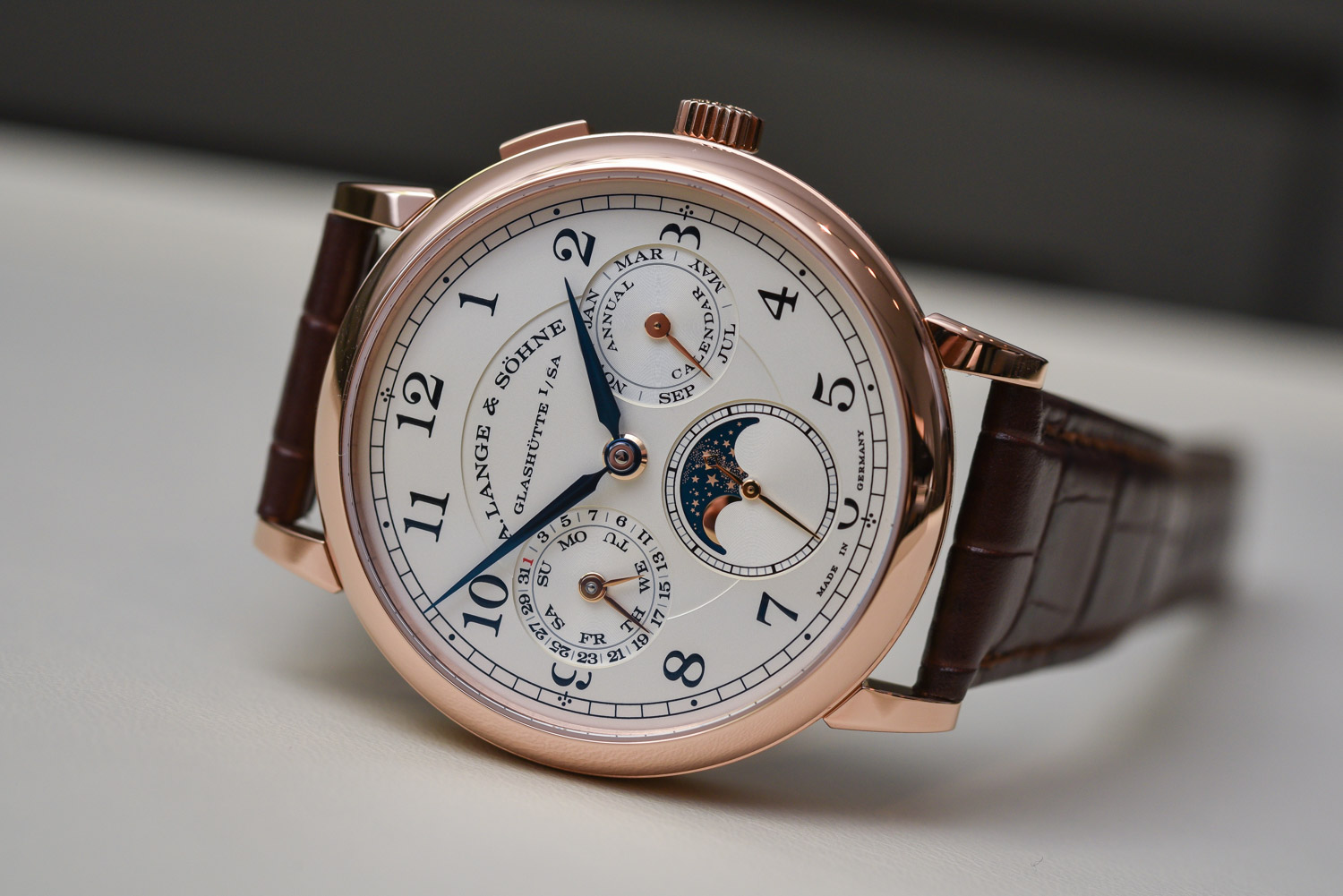

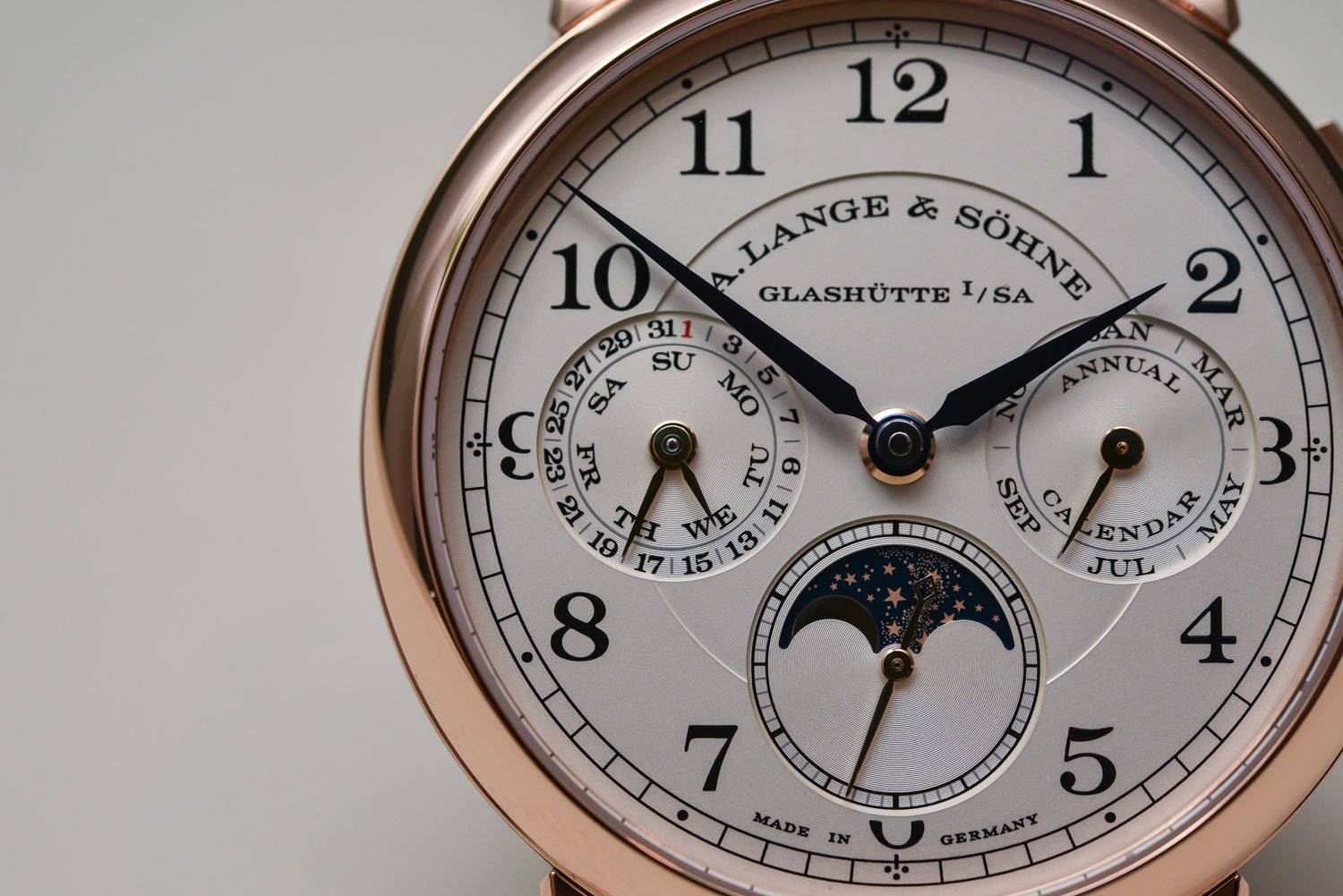
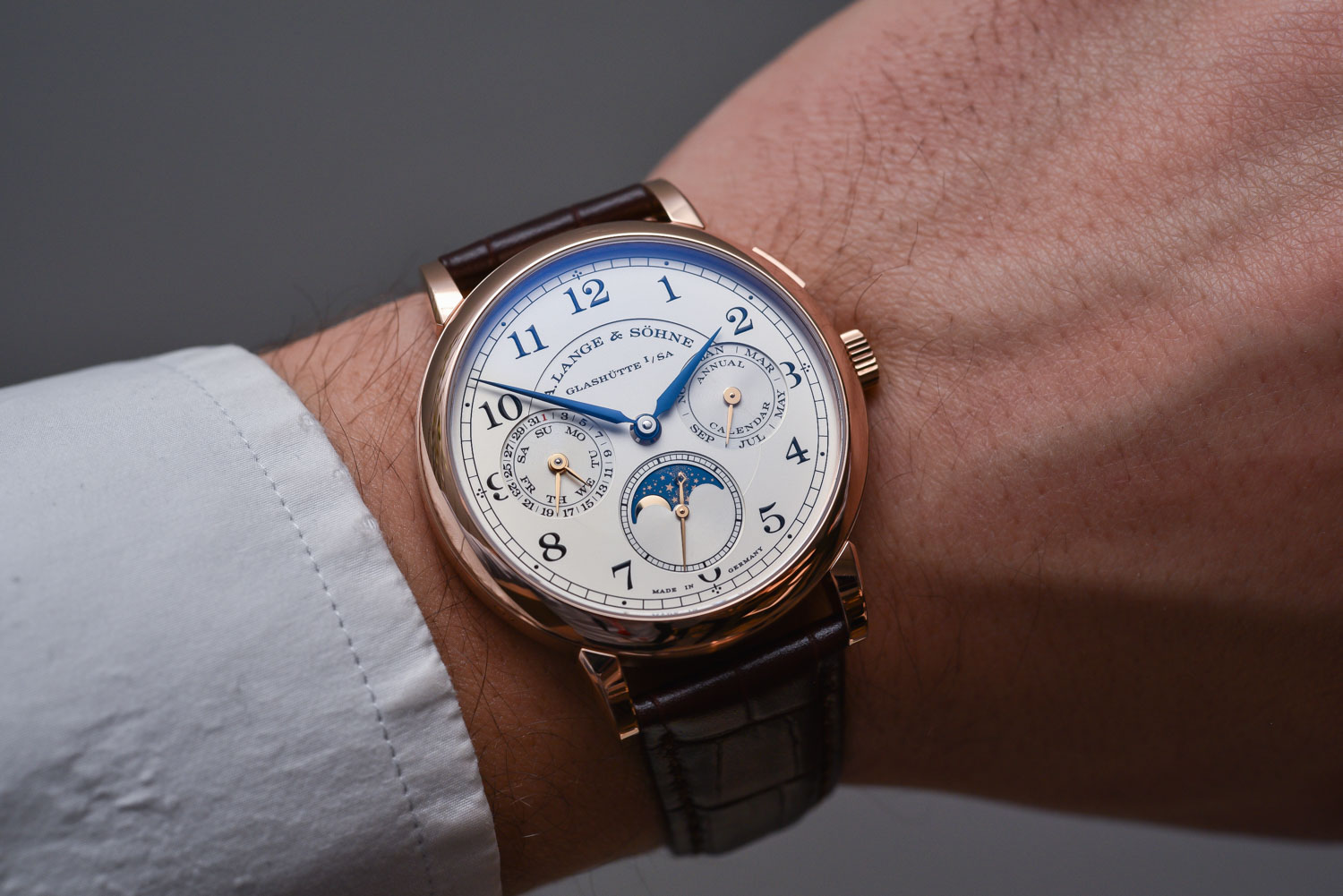
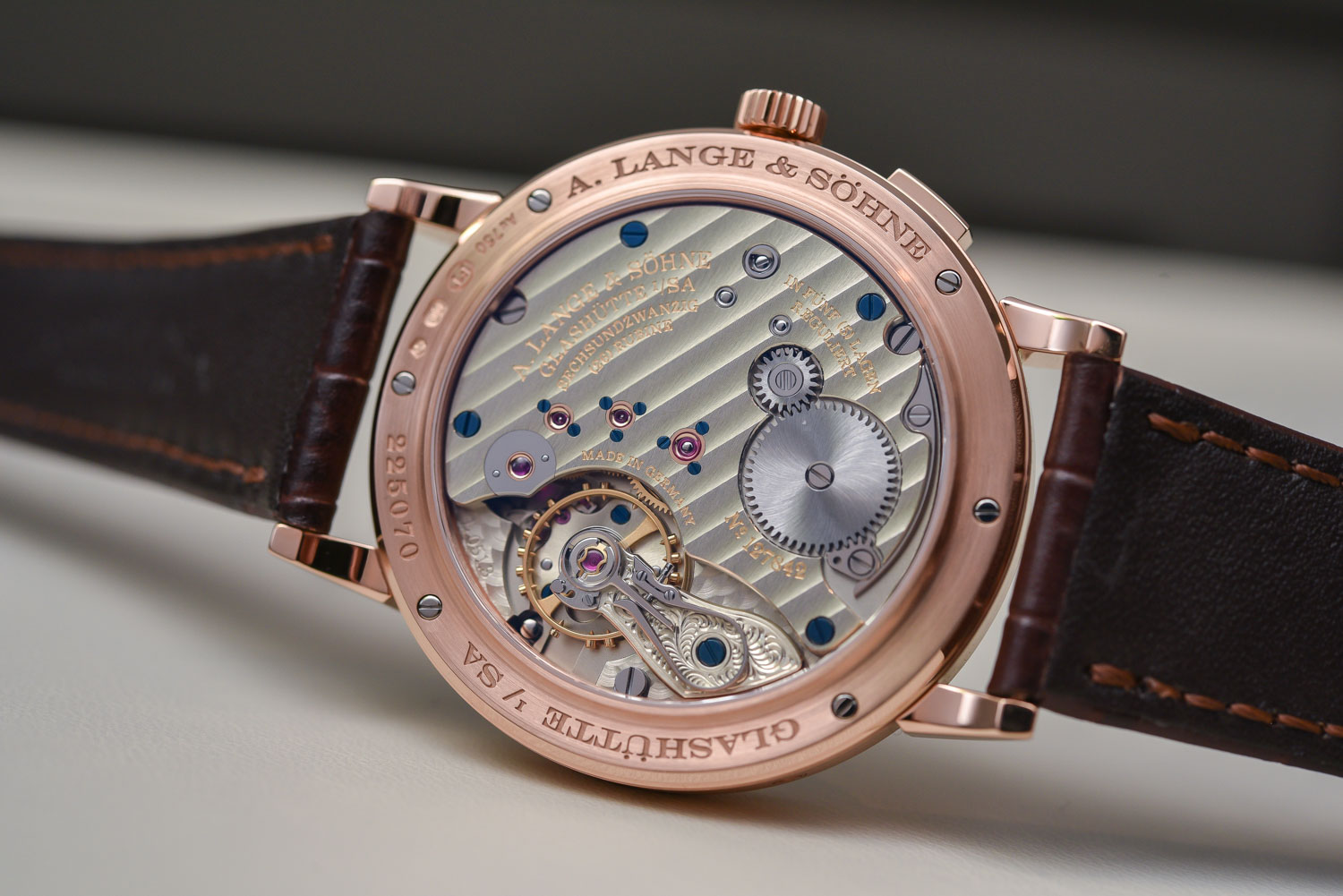



3 responses
gorgeous. simply gorgeous.
Gorgeous watch indeed but I was hoping it would have a power reserve indicator maybe a discreet one
How cool to have the day and the date sharing the same dial, but of course with separate hands.
Love the sunk dials , reminiscent of high end pocket watches in the past.